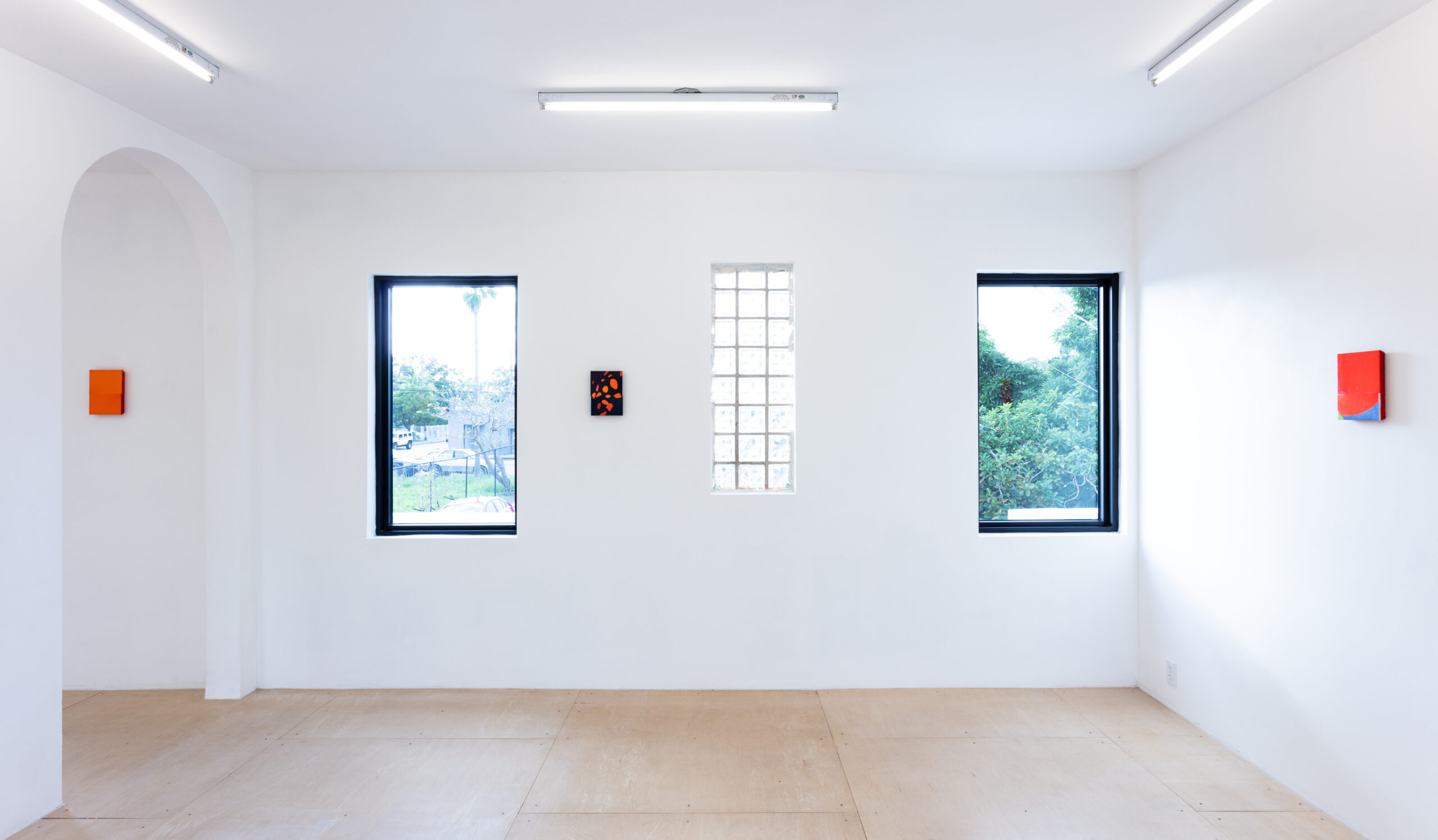Nathlie Provosty: Poison Dart
November 20th, 2020 - January 30th, 2021-

Poison Dart, installation view
When I had COVID-19 my sense of smell vanished, even canned tuna fish disappeared. My lungs were spared, but I had vivid dreams. A dragon crept its massive head through my open doorway, eyes glared; it was not a myth, it was an animal. I started drawing dragons and understood they related to time, power, the facing of fear.
-

Sun Moon Beast (20-05), 2020, ink on paper, 16 x 13.5 in.
The poison dart paintings have percolated in my mind for a few years, but I never felt right enough to make them. The name derives from a brightly colored frog with poisonous skin that could kill you if you touch it. I’ve explored subtle color and hidden images that feign invisibility over the past seven years. I’ve explored camouflage and studied the coloration methods of an octopus. I’ve been involved with trickery, as with deimatic color that appears to be something it is not, such as fake eyes on butterfly wings; in my case I’ve painted planes shifting and false edges. But aposematic color—vivid color that means what it signifies (danger, touch me = death)—I’ve not too much engaged. So the idea of these bright paintings sat by the wayside, waiting for me to become interested in paintings that can be forthright in their color, and unabashed in lifting sources from the biological world.
-

Icon (xix), 2019, oil on linen on dibond, 9 x 6.5 in.
A note on frogs: they take exceptionally deep breaths. Scientists have studied how they piston air into their lungs (hoping to learn to help humans who otherwise need ventilators). They also absorb oxygen through their moist skin and thereby breathe with their whole bodies. Frogs live in realms wet and dry, take big leaps, and are sonic, like paint/painting/the painted.
-

Poison Dart, installation view
-

Poison Dart, installation view
The poison dart has sapphire, gold and lazurite skin. Their toxins attack a predator’s nervous system and the electrical impulses in the heart. Scientists hope to discover a new painkiller with their poison. Many people have felt pain this year. Our society is disease-ridden.
-

Poison Dart (v), 2020, Oil on linen on dibond, 9 x 6.5 in.
I heard a vaccine is entering the market. A vaccine is aposematic color, in a sense, “a preparation of killed microorganisms, living attenuated organisms, or living fully virulent organisms that is administered to produce or artificially increase immunity to a particular virus.” Not dangerous due to its scale, it becomes a healthy dosage of deceit.
-

Nathlie Provosty, Poison Dart (iv), 2020, oil on, linen on dibond, 9 x 6.5 in.
COVID made me acknowledge I could never smell well. Now my olfactory organs work better than ever, I think. Maybe I’m just more aware. Perhaps the poison dart paintings are patches of chromatic awareness, therapeutic venom for facing dragons.
Nathlie Provosty
20 October 2020
-

Poison Dart, installation view
-

Poison Dart, installation view
Nathlie Provosty (b. 1981) is a visual artist based in New York, whose work is engaged with materiality and perception. The artist uses subtle, highly tactile qualities of oil paint that oscillate visually and conceptually due to the painting's multi-referential imagery, physical interaction with light & the environment, and continuous spatial shifts. Her first one-person exhibition in New York opened in 2012 at an experimental artist-run gallery called 1:1, and she has since exhibited nationally and internationally including presentations at the ICA Milano, Italy (2023), Risorgimento Museum in Turin, Italy (2018-19), Nathalie Karg Gallery in New York (2022, 2019, 2018, 2016), and A Palazzo Gallery in Italy (2023, 2020-21, 2017); Group exhibitions include Gagosian Gallery, London (2023), the Santa Barbara Museum of Art, CA (2020), the San Francisco Museum of Modern Art (2019), Kunsthall Stavanger, Norway (2018), Colby Museum of Art, ME, curated by Alex Katz (2017), and the Washington University Museum, DC (2017).